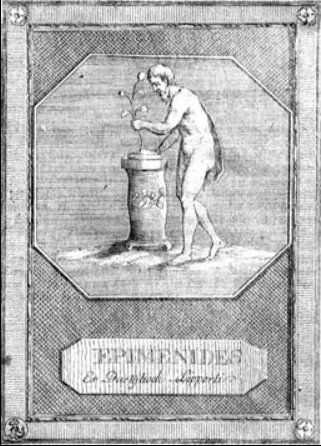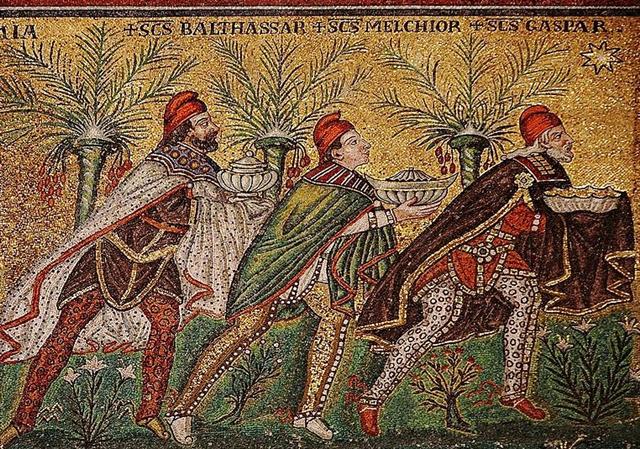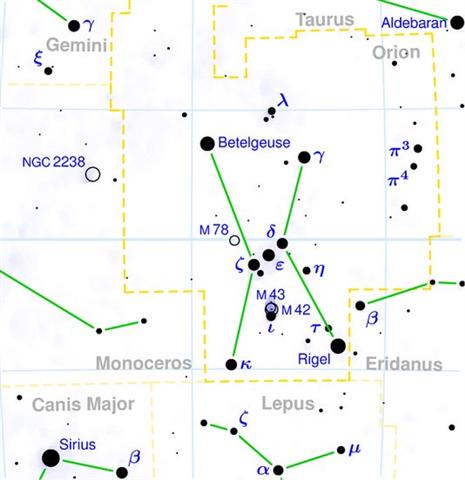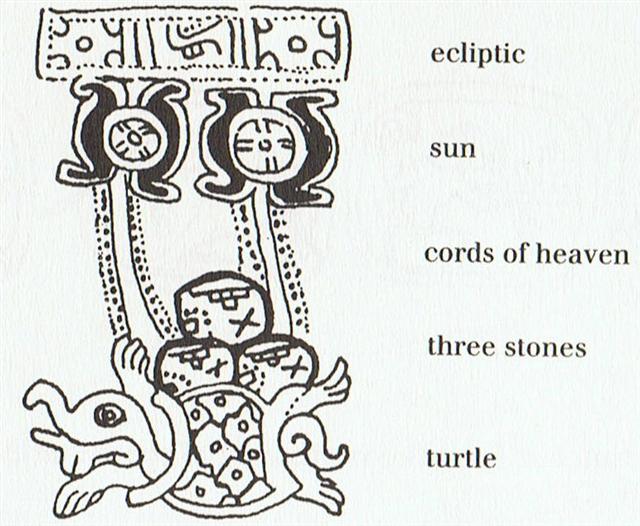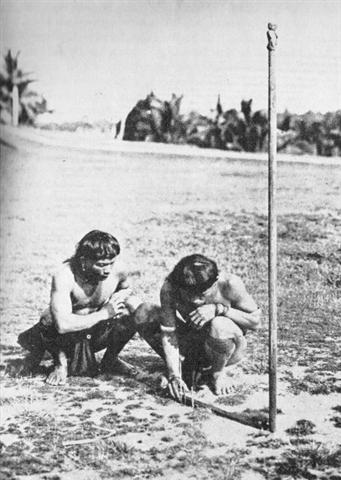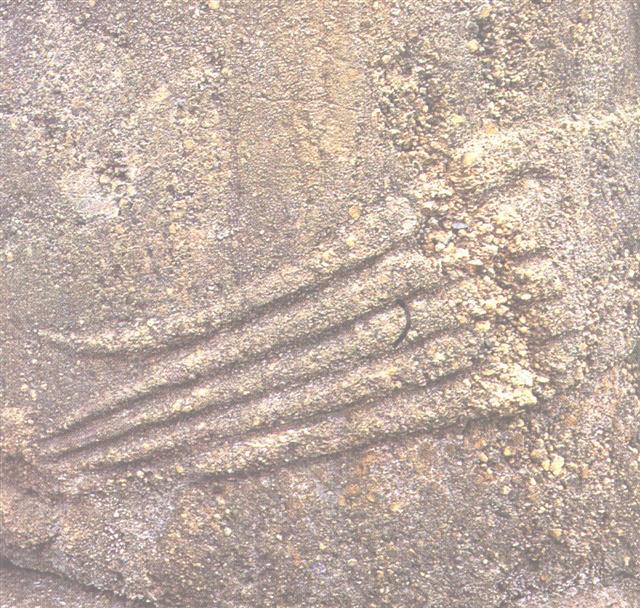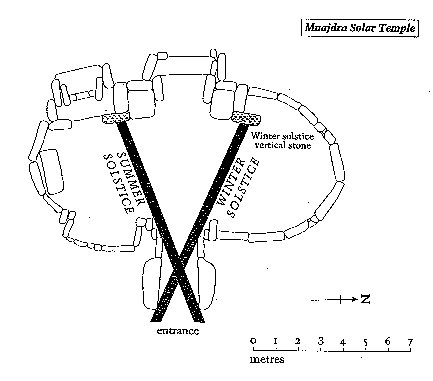505. Once again. The 'low forehead' at the end of the old year (te ua according to Metoro), which in Roman times had been in day 290 ('October 17) with the Full Moon at the position of day 107 ('April 17), had at the time of the Bull (64 + 16 = 80 right ascension days earlier than the time of rongorongo) been at the position of day 107 ('April 17) - (64 - 27) - 16 (days from true heliacal to return to visibility) = 107 - 37 - 16 = 107 - 53 = 54 (BISSEXTUM):
Counting 49 days 'ahead' to the next ua glyph will bring us from November 13 to the beginning of the month of Janus where a new year 'palm tree' (nikau) was beginning - like a shoot from a nut (niu):
... The seventh tree is the oak, the tree of Zeus, Juppiter, Hercules, The Dagda (the chief of the elder Irish gods), Thor, and all the other Thundergods, Jehovah in so far as he was 'El', and Allah. The royalty of the oak-tree needs no enlarging upon: most people are familiar with the argument of Sir James Frazer's Golden Bough, which concerns the human sacrifice of the oak-king of Nemi on Midsummer Day. The fuel of the midsummer fires is always oak, the fire of Vesta at Rome was fed with oak, and the need-fire is always kindled in an oak-log. When Gwion writes in the Câd Goddeu, 'Stout Guardian of the door, His name in every tongue', he is saying that doors are customarily made of oak as the strongest and toughest wood and that 'Duir', the Beth-Luis-Nion name for 'Oak', means 'door' in many European languages including Old Goidelic dorus, Latin foris, Greek thura, and German tür, all derived from the Sanskrit Dwr, and that Daleth, the Hebrew letter D, means 'Door' - the 'l' being originally an 'r' ...
The World Tree (Nikau) took various forms depending on the local conditions, but it evidently grew up (became visible - i nika) from the winter solstice and was hewed down at the summer solstice. ... Midsummer is the flowering season of the oak, which is the tree of endurance and triumph, and like the ash is said to 'court the lightning flash'. Its roots are believed to extend as deep underground as its branches rise in the air - Virgil mentions this - which makes it emblematic of a god whose law runs both in Heaven and in the Underworld ... The month, which takes its name from Juppiter the oak-god, begins on June 10th and ends of July 7th. Midway comes St. John's Day, June 24th, the day on which the oak-king was sacrificially burned alive. The Celtic year was divided into two halves with the second half beginning in July, apparently after a seven-day wake, or funeral feast, in the oak-king's honour ... Or sank down: ... the breadfruit originated from the sacrifice of the war god Ku. After deciding to live secretly among mortals as a farmer, Ku married and had children. He and his family lived happily until a famine seized their island. When he could no longer bear to watch his children suffer, Ku told his wife that he could deliver them from starvation, but to do so he would have to leave them. Reluctantly, she agreed, and at her word, Ku descended into the ground right where he had stood until only the top of his head was visible. His family waited around the spot he had last been, day and night watering it with their tears until suddenly a small green shoot appeared where Ku had stood. Quickly, the shoot grew into a tall and leafy tree that was laden with heavy breadfruits that Ku's family and neighbours gratefully ate, joyfully saved from starvation ... ... But in the fullness of time an obscure instinct led the eldest of them towards the anthill which had been occupied by the Nummo. He wore on his head a head-dress and to protect him from the sun, the wooden bowl he used for his food. He put his two feet into the opening of the anthill, that is of the earth's womb, and sank in slowly as if for a parturition a tergo. The whole of him thus entered into the earth, and his head itself disappeared. But he left on the ground, as evidence of his passage into that world, the bowl which had caught on the edges of the opening. All that remained on the anthill was the round wooden bowl, still bearing traces of the food and the finger-prints of its vanished owner, symbol of his body and of his human nature, as, in the animal world, is the skin which a reptile has shed ... I have above used the Roman time frame in parallel with the glyphs and the rongorongo right ascension days because it was Julius Caesar who updated the ancient correlations between the star positions and the Sun calendar. Furthermore, according to Manuscript E the dark cave down into which Kuukuu the planter had been carried was connected with 27 nights (days):
... They prepared a soft bed for him in the cave and let him rest there. They stayed there, rested, and lamented the severely injured Kuukuu. Kuukuu said, 'Promise me, my friends, that you will not abandon me!' They all replied, 'We could never abandon you!' They stayed there twenty-seven [56 - 29 = 27 = the precessional depth down to Roman times] days in Oromanga ... In Roman times the stars at the Belt of Orion (like all the other fixed stars) had been at the Full Moon approximately 27 days earlier than at the time of rongorongo:
In other words, the position of the Pleiades had in Roman times been occupied by the Three Stars.
They were close to the Full Moon when the Old Sun had only 27 days remaining to 'December 13 (the date of Lucia):
... Obviously this time of the year must once have been a kind of 'candlemas'. Precession makes the dates of celebration move earlier and earlier, and according to the Julian calendar December 13 was the darkest day in the year. Thus the day of Lucia (who has a crown of candles in her hair) is expressing the same idea as Candlemas. No wonder people in the street here in Sweden had no explanation for Kyndelsmäss - in Sweden the candles are instead kindled 12 days before Christmas Day ...
At midsummer the male belt (mintaka) changed to a female girdle (nitak) and from there the Sun began to sink down lower and lower. Reading the picture above as the Mayas did, i.e. from right to left, we can see how the emblem for the sun suddenly turns around about 45º, presumably corresponding to how much the precession had moved midsummer (and the rest of the sun cardinal points) earlier among the fixed stars. A hint of this oriental change at midsummer has also been given in Polynesian myth, for as a consequence of the change sex of Atea the previous 4 cardinal directions had been terminated - for 4 new 'star pillars' had to be determined: ... When this tremendous task had been accomplished Atea took a third husband, Fa'a-hotu, Make Fruitful. Then occurred a curious event. Whether Atea had wearied of bringing forth offspring we are not told, but certain it is that Atea and her husband Fa'a-hotu exchanged sexes. Then the eyes of Atea glanced down at those of his wife Hotu and they begat Ru. It was this Ru who explored the whole earth and divided it into north, south, east, and west ...
The Sun went down to the southern hemisphere from the celestial equator at Orion and a new generation would later return from the (female) womb of Mother Earth:
... The Mnajdra Temple is located on Malta and very ancient, dating to the time before the pyramids. Marija Gimbutas: 'To sleep within the Goddess's womb was to die and to come to life anew'. In a system of reincarnation the old one must die in order to be reborn, of course. At midsummer Sun comes to a standstill, and this must therefore be an occasion when the 'flame of life' had to be transported into a new body ... ... Then I become aware of ... a presence - a faint, ghostly glimmering, like moonglow, that has appeared on the solstice stone. I don't know how long it lasts, a second or two only I would guess, but while it is there it seems less like a projection - which I know it to be - than something immanent within the stone itself. And it seems to function as a herald for it fades almost as soon as it has appeared and in its place the full effect snaps on - instantaneously. It wasn't there, and then it's there. As Chris had described, the effect does curiously resemble a poleaxe, or a flag on a pole, and consists of a 'shaft', narrow at the base but widening a little towards the top, running up the left hand side of the solstice stone, surmounted by a right-facing 'head' or 'flag'. An instant later an almond-shaped spot of light, like an eye, appears a few centimeters to the right of the 'flag' and the effect is complete. Weirdly - I do not claim it has any significance - this flag-on-a-pole symbol is the ancient Egyptian hieroglyph neter, meaning 'god', or 'a god' - and not to be understood at all in the Judaeo-Christian usage of that word but rather as a reference to one of the supernatural powers or principles that guide and balance the universe. Manifested here, in this strange Stone Age temple, it glows, as though lit by inner fire.'
|
||||||||||||||||||||||||||||||||||||||||||||||||||||||||||||||||||||||||||||||||||||||||||||||||||||||||||||||||||||||||||||||||||||||||||||||||||||||||||||||||||||||







